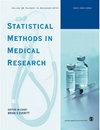The “Why” behind including “Y” in your imputation model
IF 1.6
3区 医学
Q3 HEALTH CARE SCIENCES & SERVICES
引用次数: 0
Abstract
Missing data is a common challenge when analyzing epidemiological data, and imputation is often used to address this issue. Here, we investigate the scenario where a covariate used in an analysis has missingness and will be imputed. There are recommendations to include the outcome from the analysis model in the imputation model for missing covariates, but it is not necessarily clear if this recommendation always holds and why this is sometimes true. We examine deterministic imputation (i.e. single imputation with fixed values) and stochastic imputation (i.e. single or multiple imputation with random values) methods and their implications for estimating the relationship between the imputed covariate and the outcome. We mathematically demonstrate that including the outcome variable in imputation models is not just a recommendation but a requirement to achieve unbiased results when using stochastic imputation methods. Moreover, we dispel common misconceptions about deterministic imputation models and demonstrate why the outcome should not be included in these models. This article aims to bridge the gap between imputation in theory and in practice, providing mathematical derivations to explain common statistical recommendations. We offer a better understanding of the considerations involved in imputing missing covariates and emphasize when it is necessary to include the outcome variable in the imputation model.将 "Y "纳入估算模型背后的 "原因"
在分析流行病学数据时,缺失数据是一个常见的挑战,通常使用估算来解决这个问题。在此,我们研究了分析中使用的协变量存在缺失并将被估算的情况。有建议称,应将分析模型中的结果纳入缺失协变量的估算模型中,但不一定清楚这一建议是否总是成立,以及为什么有时会出现这种情况。我们研究了确定性估算(即使用固定值的单次估算)和随机估算(即使用随机值的单次或多次估算)方法及其对估算协变量与结果之间关系的影响。我们用数学方法证明,在使用随机估算方法时,将结果变量纳入估算模型不仅是一种建议,而且是获得无偏结果的必要条件。此外,我们还消除了关于确定性估算模型的常见误解,并说明了为什么不应将结果纳入这些模型。本文旨在弥合理论与实践之间的差距,提供数学推导来解释常见的统计建议。我们让读者更好地理解归因缺失协变量时的注意事项,并强调何时有必要将结果变量纳入归因模型。
本文章由计算机程序翻译,如有差异,请以英文原文为准。
求助全文
约1分钟内获得全文
求助全文
来源期刊

Statistical Methods in Medical Research
医学-数学与计算生物学
CiteScore
4.10
自引率
4.30%
发文量
127
审稿时长
>12 weeks
期刊介绍:
Statistical Methods in Medical Research is a peer reviewed scholarly journal and is the leading vehicle for articles in all the main areas of medical statistics and an essential reference for all medical statisticians. This unique journal is devoted solely to statistics and medicine and aims to keep professionals abreast of the many powerful statistical techniques now available to the medical profession. This journal is a member of the Committee on Publication Ethics (COPE)
 求助内容:
求助内容: 应助结果提醒方式:
应助结果提醒方式:


